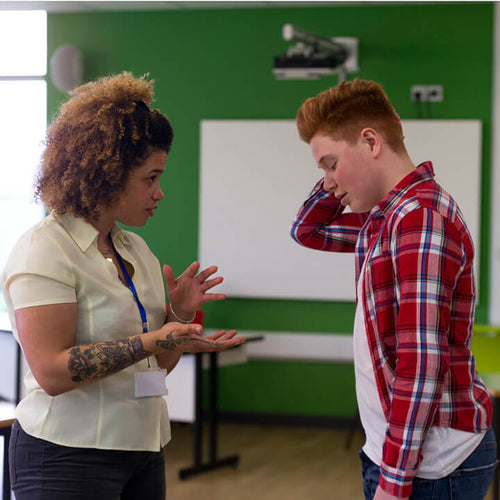Classroom management has always been a challenge for teachers, and can be especially difficult for new teachers. In recent years, the typical problems for teachers, such as defiant and disruptive students, seem to have intensified and become more unmanageable. In fact, some reports suggest that currently over 75% of teachers report frequent job-related stress.
Love and Logic’s 9 Essential Skills for the Love and Logic Classroom® curriculum for teachers has demonstrated incredible effectiveness for over 20 years, and it continues to work for teachers even today. Recently we announced that the third edition of this highly effective curriculum, will be released soon. It has been revised and updated but is still based on the fundamental principles and techniques of Love and Logic that have helped thousands of teachers.
Taking Control of Classroom Management with Love and Logic
Whether they are new to the classroom or have been teaching for many years, many teachers struggle with behavior problems in the classroom. Most of these problems stem from the fact that educators are seeing a very large increase in the number of students with severe social, emotional, and behavioral needs. Most educators agree that creating a classroom characterized by high achievement and positive discipline is growing more difficult by the day.
Love and Logic addresses these challenges by helping teachers place a greater emphasis on building solid teacher-student relationships. By taking this approach, teachers can create classroom and school cultures that foster the development of problem-solving skills and self-control, rather a reliance on adults to manage the system.
Creating a calm and cooperative classroom culture will set the stage for academic success in your classroom. Love and Logic accomplishes this by helping teachers establish positive relationships with their students, emphasizing the importance of using empathy, and providing teachers with tools for handling particularly difficult situations.
The 9 Essential Skills of the Love and Logic Classroom® curriculum contains nine simple techniques that allow teachers to accomplish this goal with ease. In fact, implementing these techniques can help teachers reduce stress levels in many ways.
Below are a few techniques from this powerful and effective curriculum.
Keep Your Head on a Swivel
Master classroom managers can identify misbehavior and address the behavior before it grows. Less masterful classroom managers seem unaware of what’s truly going on and fail to address issues until after they’ve become significant and widespread.
Being aware of as many potential issues as possible in your classroom will allow you to anticipate a growing issue before it becomes a problem. This technique is known as situational awareness and for teachers it means constantly scanning the environment for problems, even while teaching.

Nip it in the Bud
Have you ever tried to ignore the weeds that are growing in your garden? How did that work for you? I know when I pretended that I didn’t have weeds in my garden, they didn’t stop growing. Most of us have heard the old adage, “Ignore it and it will go away.” Unfortunately, this philosophy doesn’t work with misbehaving children any more than with the weeds in my garden.
When you are staying aware of what is going on in your classroom, you can address any issues immediately before they grow and become widespread. Although overreacting to small issues can certainly make the issue worse, ignoring the issue will too.
Situational awareness helps teachers detect problems early so that they can nip problems in the bud—before they get out of control.
Use the One-Sentence Intervention for establishing positive teacher-student relationships
Developing a positive relationship between the teacher and student is very powerful. The One-Sentence Intervention is one of the most powerful Love and Logic techniques. Noticing a student’s interests and acknowledging them is one very effective way to establish a positive connection. You can use this basic format:
“I noticed that ________.”
Always remember that a one-line must be delivered without any follow-up comment such as, “That’s great.”
Express genuine empathy before giving consequences
Genuine, sincere expressions of empathy must precede the consequence. Lectures about how much the child should learn from his/her experience cancel out the benefit of the consequence.
Model and teach problem solving
Handing problems back to students helps them learn to solve their own problems. It also shifts the responsibility and stress for solving the problem from the teacher to the student. Here are Love and Logic’s five steps for handing the problem back to a student:
- Lead with empathy: “Tough problem, huh?”
- Follow with a sincere question: “What do you plan to do?”
- Gain permission to share: “Would you like to know what others have tried?”
- Explore possible outcomes: “How do you think this might work for you?”
- Allow to solve or not: “Good luck. Let me know how it works out.”
Learning more about Love and Logic Classroom Management
Every teacher deserves a classroom where respect, focus, and cooperation thrive. The newly revised third edition of the 9 Essential Skills for the Love and Logic Classroom offers practical, proven strategies to help you build stronger connections with your students, manage behavior effectively, and create a calm, supportive space for learning.
Thanks for reading!














